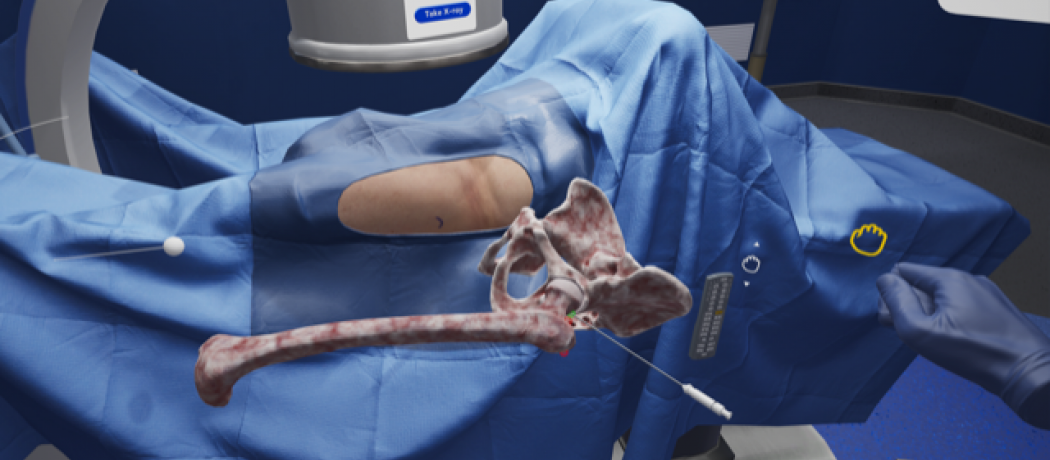Health care has begun to harness the power of immersive virtual reality (VR). This decade-old technology permits one to experience and engage in a situated and realistic form of macro-learning, which differs from partial task training, where one uses traditional simulators to practice a task, such as drilling through bone or learning arthroscopic triangulation.
Through virtual operating rooms, depth and complexity are added to these basic skills. Patient factors and variable pathologies are possible, allowing the VR operator to engage with the critical decision process—creating an entirely different form of education and thought process. VR technology is also portable, allowing for experiential learning at one’s convenience.
With many hospitals enacting policies that limit the number of extraneous personnel in the operating room for safety purposes, the need for digitized solutions presents an opportunity to continually provide their training capabilities while keeping physical distance regulations at the forefront.
Across the board, case studies have reported findings that VR contributes to an estimated 90% retention rate of information provided through training compared to the conventional 20% rate seen within classroom-based settings. With the flexibility of engaging in repeated learning opportunities and applying practical skills without facing any potential risks seen in the field, these forms of advanced technologies continue to present numerous advantages.
Medical education is one aspect of health care that has been greatly affected by the COVID-19 pandemic. After the suspension of normal medical school and residency training practices, a more creative and flexible curriculum for students and trainees may be required so that learning may continue, despite social distancing restrictions. This educational predicament is not specific to medicine, but the VR resources available in this realm will allow for purposeful training.
Today, there is a heightened level of medical expertise that is both expected and required within the industry to meet the growing demands of patients. Given the new environment engendered by the current pandemic, organizations must use creative solutions to ensure the safety of physicians, trainees, and patients. VR-based forms of teaching modules present welcome opportunities to help foster individualized and collaborative learning experiences across all levels of training. Covering a wide range of relevant topics ranging from medical knowledge and safety measures to clinical protocols and practical surgical procedures, immersive VR minimizes potential risks associated with COVID-19 while allowing health care professionals to share expertise through training sessions for physicians, nurses, and practitioners. Using both realistic and practical presentations as tools for teaching, the platform allows for remote collaborations within similar virtual spaces. Though there are limitations in some of these technologies, now may be the time for organizations to review the use of immersive virtual reality in learning and education.
—Liana Tedesco, MD
—Danny P. Goel, MD
Competing interests
Dr Tedesco is a PGY-3 resident in orthopedic surgery at Columbia University, New York, New York. Dr Goel is a clinical associate professor at the University of British Columbia’s Department of Orthopedic Surgery and is the CEO and founder of PrecisionOS Technology, an immersive medical education training platform.
This post has not been peer reviewed by the BCMJ Editorial Board.

